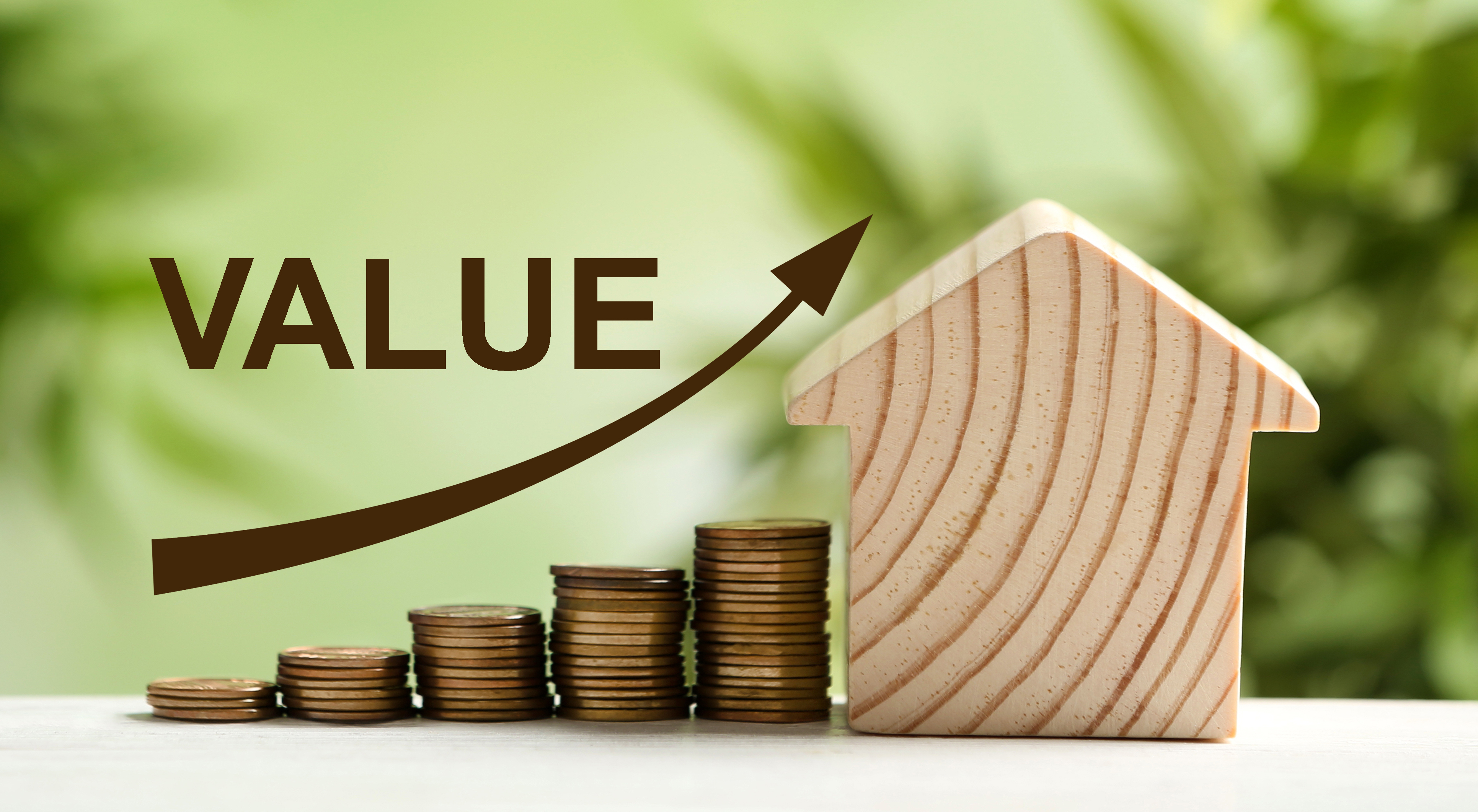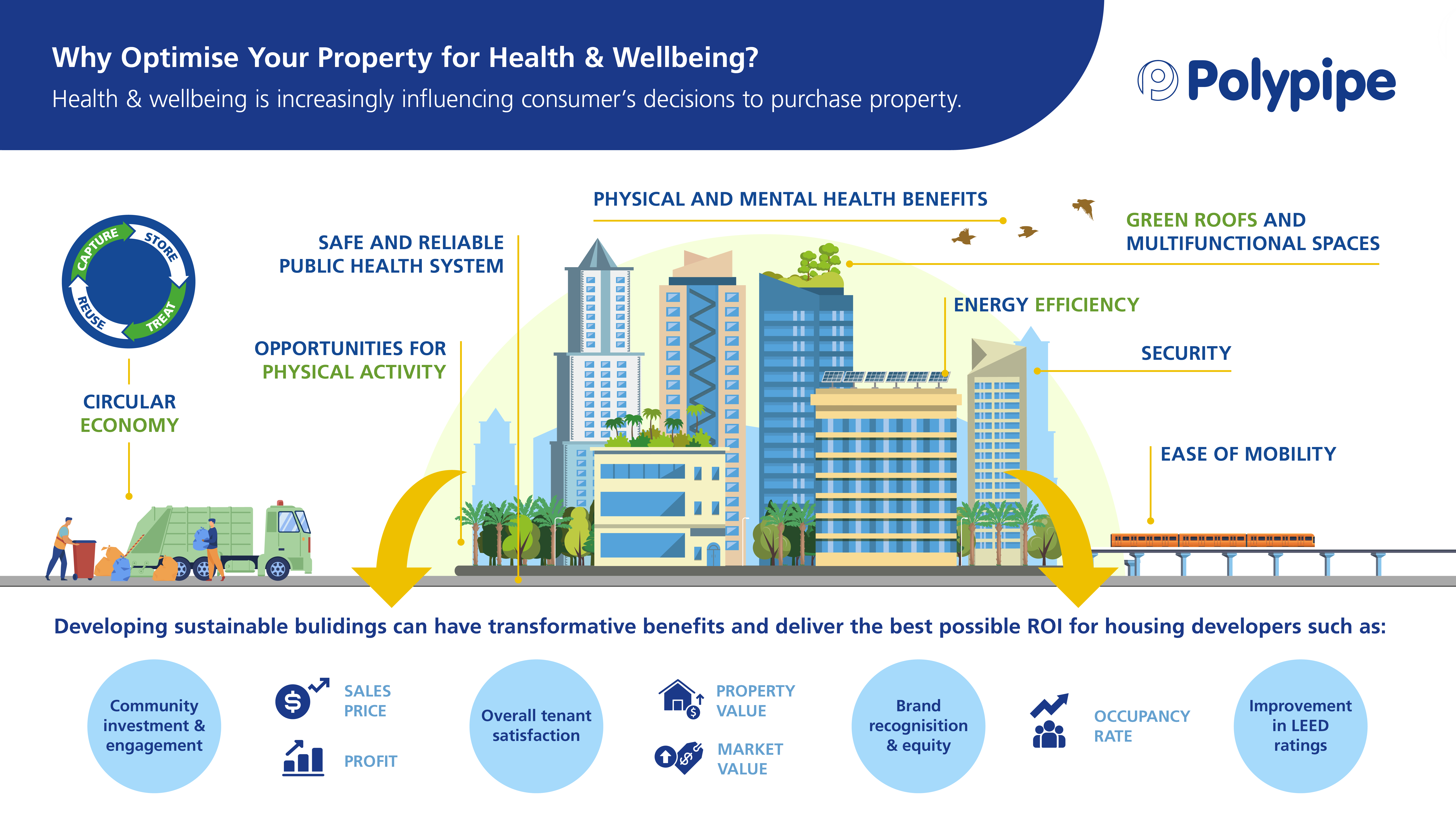
The GCC region has one of the fastest-growing populations in the world. As we move towards a post pandemic world, trends of urbanisation are regenerating, driving new plans for urban development in the Middle East. The region’s rapid population growth, affluence and abundance of natural resources has created strong market demand, making the GCC region an attractive prospect for investing, working or living.
Consequently, cities in the Middle East have realised the need to meet growing market demand in a safe and sustainable way. That’s why health and wellbeing is increasingly placed at the core of plans for urban development. The goal is to create human-centric buildings and neighbourhoods that not only enhance quality of life for residents, but also deliver ROI for those involved in design and construction.
The construction of our living and working spaces is key to sustainable urban development. As human beings, we spend around 90% of our time indoors, with 65% spent at home.[i] We often form deep emotional attachments to the spaces in which we live or work, investing time, money and effort to ensure they meet our needs.
Growing Interest in Health and Wellbeing
There is a growing interest in health and wellbeing when it comes to the property buying and decision-making process. Consumers are increasingly influenced by the ability of the property to deliver health & wellbeing benefits. In fact, homes optimized for health & wellbeing are proving to have higher value than those that are not, with ability to impact frequently used KPIs such as sales price, capital value and client satisfaction.
In a recent survey of homeowners, 90% responded that they would like a home that does not compromise their health & wellbeing, with almost 30% willing to pay more for such a home.[ii] The construction industry has realised that optimising our spaces for health & wellbeing is no longer a value-added benefit, but a necessity to protect our cities for future generations. Creating healthy buildings and neighbourhoods that support sustainable urban development is becoming vital to add value to properties.
Buildings and Neigbourhoods Should be Designed and Constructed to Deliver:
Physical and mental health benefits
Buildings should provide an indoor environment which supports both physical and mental wellbeing. Air quality, noise, light levels and temperature should all be taken into consideration to maximize occupant comfort and productivity.
Circular economy
Buildings that support a circular economy model and use a cyclic approach to waste management can deliver increased resilience, sustainability and cost savings benefits.
Green roofs and multifunctional spaces
Unused roofs of buildings can be repurposed into create green spaces for fitness amenities, relaxation or commercialization. Green roofs can also be incorporated with sustainable water management systems that enable energy and water savings and help reduce Urban Heat Island effect.
Energy efficiency
Buildings optimised to use energy efficiently can deliver a number of cost saving benefits in addition to helping reduce greenhouse gas emissions.
Security
Safety and security was voted as the number 1 feature of an ‘ideal home’. Locations with low crime rates and buildings with high security measures such as security cameras, gates and guards, help to make occupants feel safe and secure.
Ease of mobility
Buildings should increase city wide connectivity with routes that enhance mobility through access to public transport, pedestrian walkways, strategic cycling paths or other options for travel.
Opportunities for physical activity
Neighbourhoods that encourage active lifestyles through walking/cycling paths, parks or fitness amenities help to create communities where residents can incorporate physical activity into their daily routines.
Safe and reliable public health systems
Buildings should use safe and sustainable systems such as robust drainage solutions and green waste management systems. These protect occupants from bad smells and dangerous fumes, creating an indoor environment that is not only more efficient and comfortable, but also more cost effective.
The idea is to take a wellbeing valuation approach to the design and build process. In this approach, property valuation attaches monetary value to more intangible goods and services such as health, community and wellbeing.
Benefits Of Valuing Up
Evidence now links health and wellbeing to commercial value. Homeowners are increasingly attaching value to the surrounding environment of their home, considering factors such as access to green spaces, public transport and amenities, rather than just the home itself.
For office spaces, optimising buildings for health and wellbeing can have long-term financial impact. In one study, a 90% improvement in indoor air quality resulted in approximately 40% of employees feeling more productive.[iii] Enhancing our indoor environments for human comfort and wellbeing can help to reduce sick leave and improve productivity, which can directly impact the bottom line for businesses.
For developers and landlords, optimising spaces for health & wellbeing can enhance KPI’s and improve ROI on properties. Creating more human-centric spaces can help to:
- Increase rate of sales
- Increase sales price and profit
- Lower void rates
- Increase rent
- Increase capital value
More than just financial benefits, they can also support the growth and reputation of your company by delivering:
- Increased brand recognition and equity
- Community investment and engagement
- Improved client satisfaction
Looking ahead in the Middle East
In the region, urban development is highly focused on health, wellbeing and sustainability. The Dubai Master Plan 2040, for example, outlines wide-ranging visions that aim to provide the best quality of life for the city’s residents. The plan includes initiatives to improve interconnectivity by ensuring 55% of the city’s population will live within 800 metres of a main public transport station. The plan also seeks to double the number of green spaces and leisure areas in the city. Initiatives such as the Dubai Master Plan 2040 have placed a clear focus on health and lifestyle to drive social and economic growth in cities in the Middle East.[iv]
Going forward, green building legislation is one way we can ensure the continued consideration of health & wellbeing in our spaces. Dubai has a high number of LEED certified green buildings with around 550 active green buildings.[v] The trend towards healthy building emphasizes the importance of occupant-centric design. Green building design and construction provides standardized ways to enhance health, safety, wellbeing and sustainability in our spaces, which ultimately improves ROI and brand equity.
To discuss how we can help you add value and enhance health & wellbeing for your project contact us now:
Tel: +971 (0) 4 518 3000
Email: middleeast@polypipe.com
[i] https://www.worldgbc.org/sites/default/files/160705_Healthy_Homes_UK_full_report.pdf
[ii] https://www.worldgbc.org/sites/default/files/160705_Healthy_Homes_UK_full_report.pdf
[iii] https://www.worldgbc.org/sites/default/files/160705_Healthy_Homes_UK_full_report.pdf
[iv] https://www.thenationalnews.com/uae/dubai-2040-everything-you-need-to-know-about-the-urban-master-plan-1.1183432
[v] https://www.re-thinkingthefuture.com/fresh-perspectives/a1834-10-of-uaes-most-sustainable-buildings/

